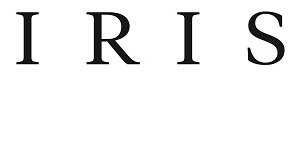
Dr. Jocelyn Leung is passionate about contact lenses. Here she discusses how she implements multifocal contact lenses into her everyday practice to provide patients with vision that fits their lifestyle.
Jaclyn: How do you identify successful candidates for multifocal contacts?
Jocelyn: Once patients reach presbyopia, possibly getting eyestrain and headaches, you can have the conversation about multifocals.
If the patient is already a contact lens wearer, fantastic. Patients who wear contact lenses are used to not wearing glasses and want to maintain this lifestyle. Glasses are inconvenient for any athletic activity, traveling, especially nowadays with the masks causing constant fogging!
I discuss the options with the patient: glasses over contacts, monovision, or multifocal contact lenses.
Before a multifocal fitting, I set expectations and let the patients know that they won’t necessarily have 100% clarity of vision but will get convenience. I usually say that they can achieve about 80-90% of what they would be able to see with glasses and gauge the patient’s response.
Patients who prioritize convenience over perfect vision are ideal candidates. It is important to make sure that the patient understands the way multifocal lenses work and what is optically possible.
Jaclyn: How is the conversation different if the patient is not a previous contact lens wearer?
Jocelyn: Multifocal contact lenses are a good option for presbyopic patients whose end goal is to be glasses free, even if they have not previously worn contact lenses. The process does take a little bit more time, with teaching insertion and removal and educating on contact lens hygiene.
It really depends on the patient’s personality and visual demands. Last week, I fit a patient who has never worn contact lenses but did not want to wear glasses anymore due to the mask and fogging. She was very, very happy with her lenses right off the bat and I finalized her prescription with only one more visit.
Jaclyn: Can you walk us through your process of fitting multifocal lenses?
Jocelyn: I first discuss the process and fitting fees with the patient. On average it is going to take three visits and some time to find the right prescription. I let the patient know that it’s very likely they won’t be fit on the first try, and then if they are fit earlier, they’re even happier.
I look at the prescription and what lenses the patient has worn in the past. Using a brand or modality similar to what they’re currently wearing can help ease the transition. I usually stick with DAILIES TOTAL1 as my number one go-to option for multifocal lenses.
The fitting guide, which is individual to every brand and contact lens, is very important. My tip is to find two or three multifocal lenses that you like and memorize those fitting guides. Then if you need to pivot, you can look up the fitting guide for the other tertiary lenses.
Grab your first trial lens and have the patient try the lenses on in the office. It does take some time for the lens to settle and for the patient’s brain to adjust, so let the patient know that you do not expect perfect vision right now.
Make sure that the patient is functional before they leave the office: meeting the driving standards, comfortable seeing far away, and can read their phone. Then you can send them home with some lenses.
I do a one week follow up, but the patient can take two to four weeks to adapt. I like to see the patient at least every week, maximum two weeks, for a follow up to get their feedback. Otherwise, the patient may try the lens, forget about their vision, and not be able to provide you with comments. If there’s something the patient isn’t happy with, they need to vocalize that to you. You need to ask the right questions and be able to adjust from there.
At the first follow-up appointment, I get feedback on the comfort and vision at distance, intermediate, and near. I do use a reading card for a metric number at near, but I do not base my success on a number. I am not aiming for a certain visual acuity. I am aiming for what the patient is happy with because everyone has different visual demands.
We see if the patient wants to improve their distance or near vision and make sure that the comfort of the lens is good. We can then do an over-refraction to see what adjustments need to be made.
After a few appointments, if we find a lens that the patient is happy with, we can finalize the prescription. If the patient still is not getting comfortable vision, we can give it another shot for a few more weeks before switching to monovision or back to glasses if necessary.
Jaclyn: Can you give us some insight into your discussion on fitting fees with the patient?
Jocelyn: I always discuss fees first so there are no surprises. If financials are a deciding factor, then we only discuss options within their absolute cutoff budget.
We can always educate and bring awareness to our patients on the options available. However, if the patient is very happy with over-the-counter readers or taking their glasses off to read, they likely won’t be convinced to try multifocals. It’s what they’re used to and that’s what they’re happy with. To try multifocal lenses, you have to be enthusiastic and engaged in the process.
If the patient is willing to give multifocals a try, that’s when we can add the most value. I’ll explain that a contact lens fitting is a process, and the fitting fee is a one-time fee that covers trial lenses and multiple appointments.
As long as the patient understands that we are putting in the effort to try to get them the best vision possible, they will be more open to that fitting fee. Depending on the clinic, fitting fees may also cover appointments for any sort of infections or emergencies related to contact lenses. This gives the patient reassurance that we’re going to be there every step of the way.
Jaclyn: Great, thank you so much for all your tips on being more successful with our multifocal fits!

JACLYN CHANG, OD
Editor NewOptometrist.ca
Dr. Jaclyn Chang graduated from the University of Waterloo (UW) with an Honours Bachelor of Science in Biomedical Sciences before continuing at Waterloo to complete her Doctor of Optometry degree. She is currently a practicing optometrist in Toronto.
Dr. Chang is committed to sharing information and bringing new resources to her colleagues. As a student, she sat on the Board of Trustees for the American Optometric Student Association, organizing events to connect students with industry. She was the Co-Founder/Co-President of the award-winning UW Advancement of Independent Optometry Club, the first club at UW dedicated to private practice optometry. Dr. Chang is also a passionate writer, who aims to make information accessible and easily digestible to her colleagues. She has published in Optometry & Vision Science and Foresight magazine and contributed to Optik magazine. She is excited to bring valuable resources to Canada’s next generation of optometrists with NewOptometrist.ca.
























